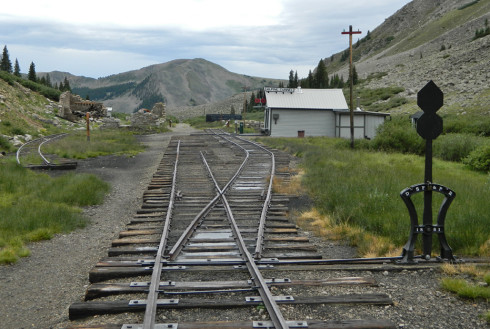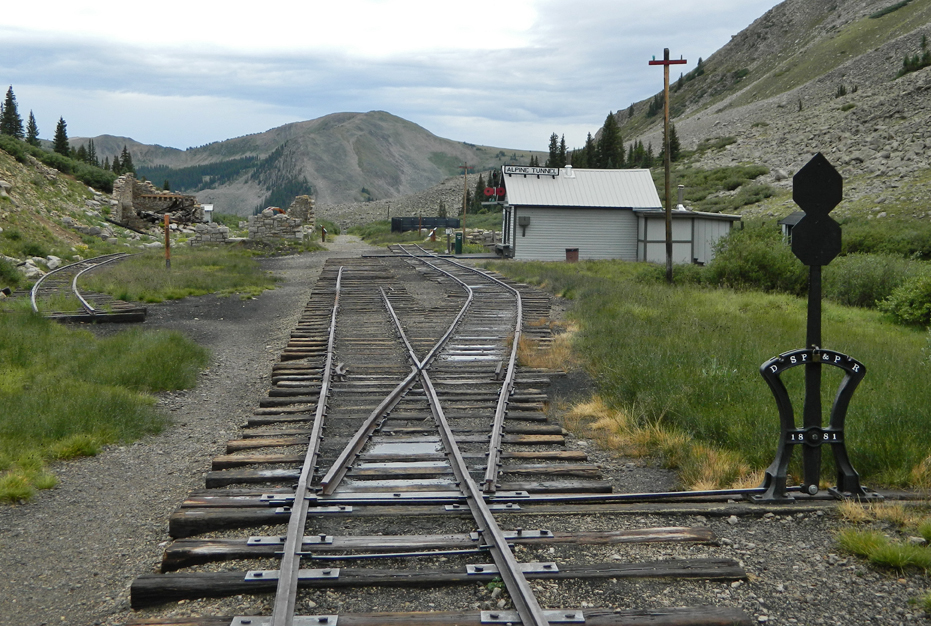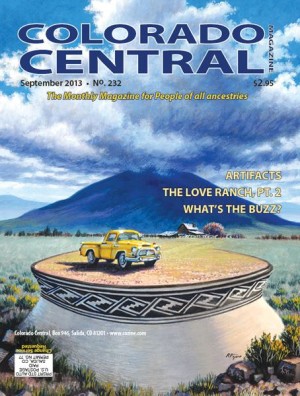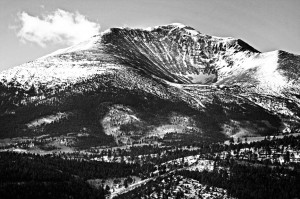By Christopher Kolomitz
At more than 11,500 feet in elevation and reached via a modest four-wheel-drive road, a driving adventure to Alpine Station and the west portal of Alpine Tunnel makes a superb trip into Central Colorado’s high country.
The journey provides a fascinating glimpse into the history of one of the state’s most ambitious and short -lived railroads – the Denver South Park and Pacific. Construction on the line started in 1878, and in 1889 the original owners defaulted. Shortly after, history’s cruel ways intervened and the line never made it to the Pacific, only reaching the Gunnison area and Leadville via Boreas and Fremont passes.

However, what the line lacked in distance, it made up for in scenery and engineering might when the Alpine Tunnel became the nation’s first hole through the Continental Divide in 1881.
Today, the Alpine site is a trip back in time with nicely designed interpretative signs, switches, rails, a reconstructed telegraph house, turntable and a mock-up of the tunnel interior.
The location also contains the stone remains of the 1881 engine and section houses, which were destroyed by fire in 1906, and the wooden collapsed ruins of the boarding house, which was constructed in 1906 and abandoned just four years later.
Construction of the tunnel began in January of 1880, and railroad officials thought it would be completed in six months. However, brutal weather conditions and decomposing rock made tunneling efforts slow. The first engine made the transit of the divide in December 1881, although the first train didn’t pass through until six months later.
The DSP&P never really flourished. Its corporate ownership was cloudy, and the route through Alpine Tunnel was done in by the harsh realities of mountain railroading, disasters, mining busts and stiff competition from the Denver & Rio Grande.
The final train through Alpine Tunnel was in November of 1910. Fourteen years later the rail was removed. Volunteer efforts to preserve the area began in 1994 and then again in 2010 when interpretive signs, stabilization and reconstruction efforts were undertaken by History Colorado, the U.S. Forest Service and others.
The most popular route to reach Alpine Station and the west portal of the tunnel involves traveling roughly 13 miles northeast from Pitkin on Forest Service Roads 765 and 839. The route is well marked, closes with fall snow and doesn’t reopen until early June or later.
The entire area around Alpine is rich in mining history and is an outdoor recreation hotspot. Several other backcountry routes for the adventurous may be used to reach the site, including a loop that leaves St. Elmo via Tin Cup Pass or Hancock Pass and uses Cumberland Pass on the West Slope. Hikers can access the east portal of the Alpine Tunnel via a three-mile walk along the old roadbed which leaves Hancock just off F.R. 295. There are a few interpretative signs along the way, but nothing like the west side. A climb over Altman Pass puts you at the west portal.




